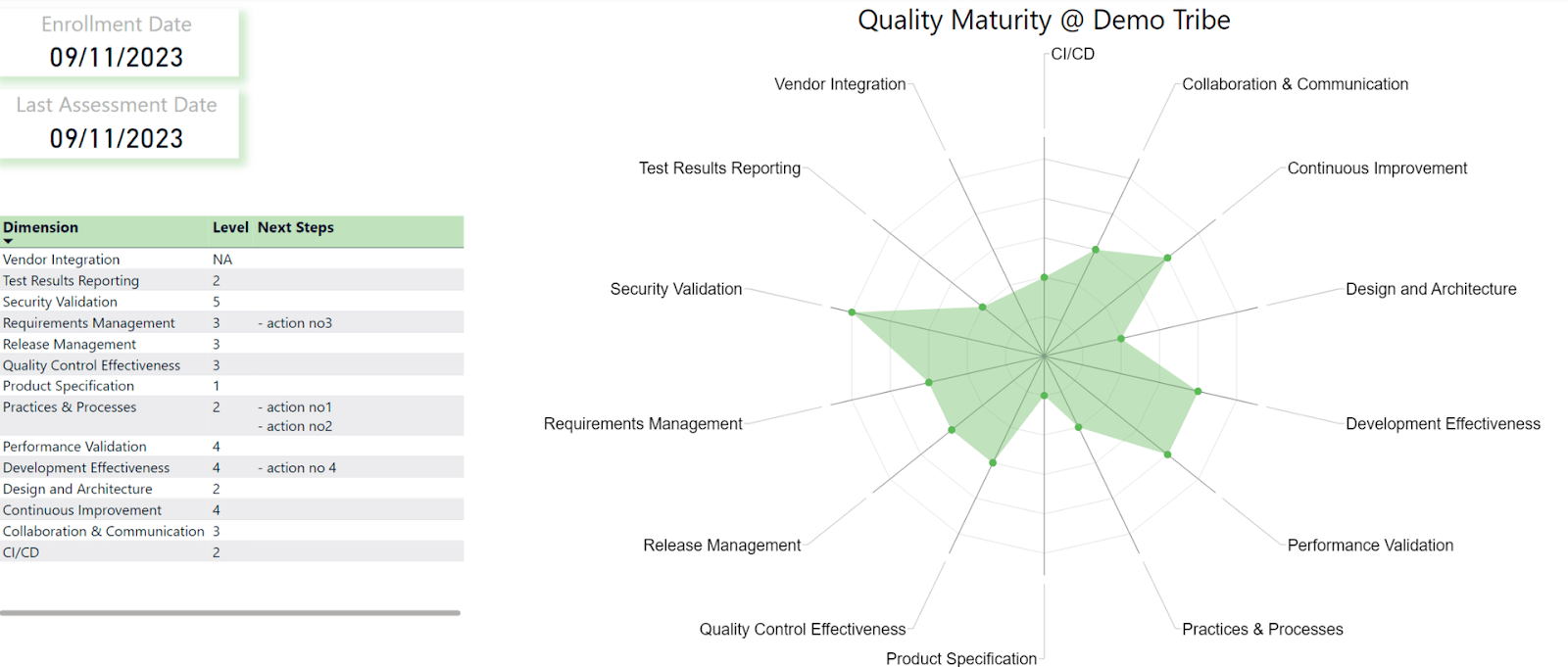Key components
14 dimensions
At the project level, the review is designed to provide a comprehensive view of the software quality maturity spectrum, focusing on key dimensions that impact the entire software development life cycle. Each dimension serves a unique purpose and collectively paints a holistic picture of the project's maturity and areas of improvement.
- Practices & processes: assess the consistency, documentation, and clarity of processes and practices across teams at the project level.
- Collaboration & communication: assess the consistency, clarity, and transparency of inter-team interactions, and decision-making processes at the project level.
- Product specification: focuses on the clarity of product vision, user experience design, continuous product discovery practices, detailed product specification, and the integration of user and stakeholder feedback into the development process.
- Requirements management: this evaluates how effectively the project gathers, prioritizes, and manages user and system requirements, ensuring alignment throughout the development lifecycle.
- Design and architecture: evaluates the maturity and design and architecture clarity, documentation, maturity, peer review practices, and the integration of product discovery insights.
- Development effectiveness: a critical dimension that measures the capabilities of a project in terms of coding, design, and implementation.
- Quality control effectiveness: this dimension focuses on how thoroughly and efficiently a project tests and validates its software products, ensuring they meet the desired quality standards before release.
- Test results reporting: assess the consistency, clarity, comprehension, and meaningfulness of test results reporting at the project level.
- Security validation: assesses the rigor, thoroughness, and effectiveness of security measures and their verification processes at the project level.
- Performance validation: gauges the accuracy, comprehensiveness, and effectiveness of evaluating and ensuring optimal system performance.
- Continuous Integration/Continuous Deployment (CI/CD): evaluates the efficiency, reliability, and robustness of CI/CD processes within the development life cycle at the project level.
- Release management: assesses the effectiveness, timeliness, and seamlessness of software release cycles at the project level.
- Continuous Improvement: examines the commitment to iterative enhancements, responsiveness to feedback, and proactive pursuit of continuous improvement.
- Vendor integration: evaluates the project’s capability and maturity of integrating third-party vendors, tools, or platforms into the product ecosystem.
5 maturity levels
In terms of levels within each dimension, it's important to understand the nuanced distinctions that guide a project's maturity journey:
- Level 1: the starting point is often ad-hoc and reactive. It's where the project begins, but not where it wants to stay.
- Level 2: an intermediate point, a checkpoint proving the project is on the desired path.
- Level 3: the baseline. Core operations with a clear understanding and adherence to practices and processes are in place.
- Level 4: introduces the power of data, enabling better, data-based decisions based on relevant metrics.
- Level 5: the project is not just following practices. Rather, it's continuously improving, learning from data and experience to continuously refine the approach. This implies early problem detection and prevention, ensuring potential challenges are addressed even before they surface.
Radar chart visualization
- Holistic view of strengths, weaknesses, and progress, at the project level, across the 14 dimensions
- Promotes inward reflection and improvement plans

Summary review & report
Post-review, a summary review and summary report would offer a detailed snapshot of project’s quality maturity, paving the way for strategic improvement.
Recommended improvements
- Post-review, you will also receive a prioritized list of recommendations per dimension, based on your specific context. These recommendations are designed to be small, actionable, and easy to integrate with your current projects.
Additional information is available on the FAQ page here.